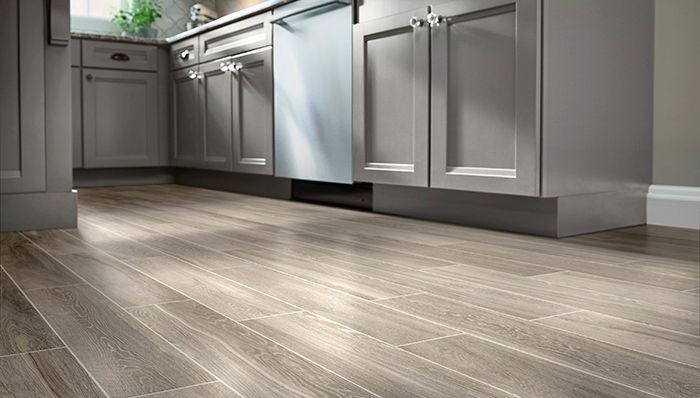
Ceramic and porcelain floor tile are versatile, durable, and fashionable. Whether your style is classic or contemporary, tile is the perfect floor for your home. They come in hundreds of colors and varieties, elevating the look of any room. You can get a tile floor that looks like wood, is highly polished, or has the timeless look of stone.
Floor tiles come in a variety of sizes including a traditional 12×12 to even modern options as big as 48×48. They can be mosaic sheets, rectangular subway tile, or even large format. Also, inkjet tile flooring technology looks so real, it’s like having a high definition TV for your floors and walls!
Frequent Asked Questions:
- What is the difference between ceramic and porcelain tile?
The difference between ceramic and porcelain is in the raw materials, production process and technical characteristics. Porcelain is better for exterior applications because it won’t crack under freezing conditions.
- Is tile waterproof?
We typically refer to all porcelain tiles as “waterproof” because water will not have a significant impact on the top of the tile or on the body of the tile.
- What is a dye lot?
“Dye Lot” refers to the slight color difference from production-to-production for the same style of tile.
- What is tile?
Tile is an extremely durable material that has been used for thousands of years in home construction. Tile is made from a mixture of raw materials pressed together to create shapes, different surfaces textures & designs.
- Where can I install tile?
The answer is simply “YES!” Floors. Walls. Ceilings. Indoors. Outdoors. Showers. Outdoor walls. Restaurants. Hotels. Shopping malls. Hospitals. Please refer to your installation materials for more details about your specific tile.
- What is the DCOF of a tile?
The Dynamic Coefficient of Friction is a rating to determine the slip resistance of a tile.
- What is pressed and rectified tile?
It’s a feature that indicates the type of edge on each tile. Rectified tiles have sharp cut edges that allow tiles to be installed closer together. Pressed tiles are beveled around the edges.
- What is colorbody tile?
The term “Colorbody” means the main body of the tile has been tinted to better compliment the graphic on the top of the tile. Chips on the surface are less noticeable than a normal body, but it depends where the chip occurs on the tile, the size of the chip, and the amount of color added to the body.
- What is throughbody tile?
A true “throughbody” tile is produced with the same solid color raw material from the very bottom to the top. During the production process, there is no design added to the top of the tile.
- What is double loaded tile?
Doubled Loaded tile has two different raw materials pressed together during production to allow for the tile to have similar characteristics as a through body tile.
- What is a caliber?
“Caliber” refers to the specific size of the tile. As the tile passes through the kiln during the manufacturing process, it will have all the moisture burned off in the intense heat. When this happens, the tile will shrink between 5% and 10%! For more information:
- Do I need specific mortar for glass tile?
Yes, it is crucial to choose a mortar designed specifically for glass tile, since the glass will be translucent and mortar can show through. We recommend Mapei Adesilex P-10 for your glass tile installation. Please note: if any one side of the tile is larger than 6 inches, Keraply must be used in place of water.
- Do I need specific grout for glass tile?
Choosing the correct grout is important for any tile installation, but perhaps even more so when it comes to glass tile. We recommend unsanded grout as the coarse grains in sanded grout could scratch the surface of your new glass decorative.
- How do I clean tile?
We recommend cleaning your porcelain or ceramic tiles with a non-abrasive cleaner, accompanied by routine sweeping to remove dirt and debris.
- Do I need to seal my tile?
The surface of porcelain and ceramic tile do not require sealing, however, it’s important to note that even though your porcelain or ceramic tile does not need to be sealed, the grout used during installation will need to be sealed and maintained.
